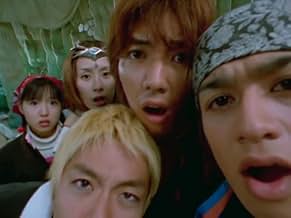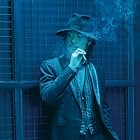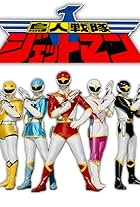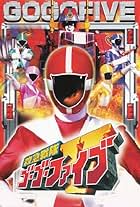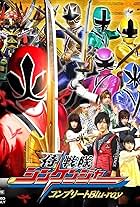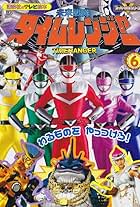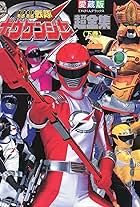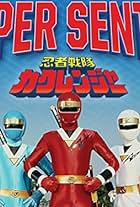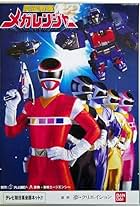GAORANGER is the 2001 entry in Toei Television's long-running series of live-action "sentai" (super battle team) programs featuring five young superheroes in color-coded costumes who fight monsters, aliens and demons in modern Japan. These Japanese series have consistently supplied the action and effects footage for Fox Kids' long-running "Power Rangers" franchise on American television, which began with MIGHTY MORPHIN POWER RANGERS in 1993. In February 2002, POWER RANGERS WILD FORCE premiered on Fox Kids (newly purchased by the ABC Family Channel) and drew its action and effects footage from GAORANGER
The five young heroes of GAORANGER have all been plucked from different walks of life until the fifth and last to be chosen, a young man who can communicate with animals, becomes GaoLion, the Red Ranger. The five Gaorangers are guided by the lovely Tetomu, high priestess of the Power Animals, who resides on a turtle-shaped island in the sky. She has summoned the Gaorangers to save the earth from a renewed assault by monsters called Orgs, who, like so many sentai monsters, are often machines or ordinary objects transformed into rubber-suited monsters who grow giant-size upon command by Org villainess Tsuetsue. (Exotic female villains in sentai series frequently turn up in the U.S. Power Rangers counterparts with Asian-American lookalike actresses hired to portray the character in new footage. Tsuetsue appears in WILD FORCE but is called Toxica, with new footage featuring actress Sin Wong flawlessly intercut with the Japanese footage.)
As is customary in sentai programs, the GaoRangers use pocket devices to transform themselves into full costume, armed with weapons unique to each. Each of the Rangers has a different Power Animal. In addition to Red (lion), there are Black (bison), Blue (shark), Yellow (eagle) and White (tiger). All five Rangers have giant mechanized fighting creatures (called "zords" in the U.S. version) modeled on their animals. In the course of the series, more Power Animals emerge (about 23 total) to help the Gaorangers while a sixth Ranger (Silver) joins the action in episode 24.
GAORANGER is about par for the course as sentai series go. It is less earthy and has a more ethereal, new-age tone than the two previous sentai series, GO GO FIVE and TIME RANGER, no-nonsense entries which were adapted in the U.S. as POWER RANGERS LIGHTSPEED RESCUE and POWER RANGERS TIME FORCE, respectively. The five Gaorangers are younger than the last two casts and engage in more youthful behavior when out of costume. We see them frequently interacting with citizens of various Japanese locales. (The series boasts a lot of colorful location shooting.) In episode 6, they get involved with a lavish wedding being staged at a swanky hotel because the young woman coordinating the wedding has made a deal with the Orgs to stay young and beautiful by turning over her bride clients who are drained by the Orgs of their life force and beauty. To carry out this mission, Gao Black, who has a crush on the wedding planner, goes in drag as the bride. In episode 8, Gao Red develops amnesia, forgetting all about the Gaorangers, and returns to his hometown and his old dog, a golden retriever, whom he'd left abruptly when recruited by Tetomu. Interestingly, as of this writing, neither of these episodes has yet been adapted for WILD FORCE, which has shown a curious tendency to isolate its Ranger heroes from the larger society (unlike, say, MIGHTY MORPHIN POWER RANGERS, in which the Rangers were high school students and active members of the Angel Grove community).
The trend in recent "Power Rangers" series, beginning with LIGHTSPEED RESCUE, has been to hew more closely to the storylines of the Japanese originals than previous PR series. WILD FORCE continues this trend, with most of its episodes, so far, acting as almost scene-for-scene remakes of the original GAORANGER episodes (with the exception, of course, of the skipped episodes). All this means that the last three U.S. "Power Rangers" series have been a lot more serious than the original MMPR (and most of its follow-ups) and manage to maintain the distinctly Japanese tone and style of the sentai tradition. This has been a welcome development to many stateside fans of Japanese live-action sci-fi fantasy adventure programs. (One of the big complaints among sentai fans about MIGHTY MORPHIN POWER RANGERS was its complete disregard for the imaginative storylines of ZYURANGERS, the sentai series which fed the first two seasons of MMPR.)





